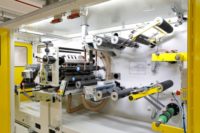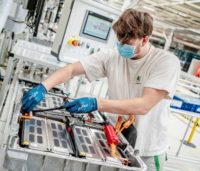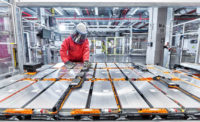Volkswagen AG is investing billions of dollars to become the No. 1 electric car manufacturer in the world. Battery R&D plays a key role in that ambitious strategy.
Before any part goes into a car or truck, automotive engineers need to know how long it will last and what role it plays in keeping the vehicle safe. That’s especially true for electric vehicle batteries and battery packs. To test batteries for safety, performance and reliability, Volkswagen Group Components has created a state-of-the-art facility in Brunswick, Germany.
“[We test] almost every conceivable case that could affect the battery system during a vehicle’s lifespan, from accidents to extreme temperatures,” says Michal Bruna, head of electronics development and testing at VW’s Battery Development Center. “Every variant of an EV battery, including the software, has to prove its safety in more than 5,000 individual tests.”
Those tests include mechanical shocks, such as those caused by curbs, railroad crossings or stone chippings. In a two-week vibration test, engineers simulate the life cycle of a vehicle traveling nearly 125,000 miles.
In other tests, batteries must withstand temperature shocks, such as those that can occur when driving through cold water. They’re also checked for durability in different climatic conditions—temperature and humidity—with required charging and discharging currents. At the end of the test cycle, each battery system is disassembled and examined.
“The complexity of an EV battery system requires several levels of tests throughout production,” explains Bruna. “[Our] Center of Excellence in Salzgitter tests the quality of the battery cells, while Technical Development in Wolfsburg tests the cell modules. The software and control units are tested automatically on hardware-in-loop test benches. And, [on the battery assembly line], the functionality and safety of each battery is checked before it is delivered to the vehicle assembly plant.”
Beyond its labs in Germany, Volkswagen is also building a new facility in Chattanooga, TN, that will test the battery cells and packs that will power U.S.-assembled versions of the ID.4 sport utility vehicle when production begins next year. Volkswagen’s massive U.S. assembly plant opened a decade ago.




